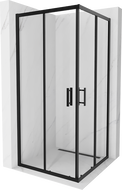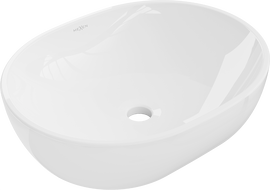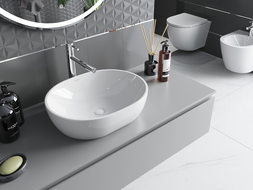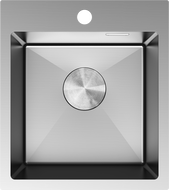
Choosing a bathtub is crucial when arranging a bathroom. The right bathtub not only enhances the aesthetics and comfort of the bathroom but also influences its functionality. Are you wondering how to plan your bathing space so that you won’t regret your decision later? The following guide will help you make the best choice, considering various aspects such as types of bathtubs, their capacity, enclosures, accessories, and screens.
From the following guide, you will learn among other things:
- what types of bathtubs are available on the market;
- what size bathtub to choose;
- what are the most popular bathtub capacities;
- which accessories are worth choosing to make bathing even more relaxing.
Before you proceed to purchase a bathtub, consider:
- Size and shape — determine the maximum size of the bathtub. The shape of the bathtub should fit both the style of the bathroom and the available space.
- Manufacturing material — acrylic, enamel-coated steel, or stone and composites?
- Functionality and additional accessories — handles and grab bars, anti-slip bottoms, bath pillows — the possibilities are endless!
- Aesthetics — the style and appearance of the bathtub are equally important. Choose a design that suits your tastes.
Types of Bathtubs to Choose From
Which bathtub to choose for your bathroom? The choice of the right type of bathtub is fundamentally important not only from the perspective of the functionality of the bathroom but also its aesthetics and overall comfort of use. Key aspects of selection will include the size of the bathroom and our concept for its design. What type of bathtub will work best in a small bathroom and which one should be chosen for a large bathroom?
Freestanding Bathtub
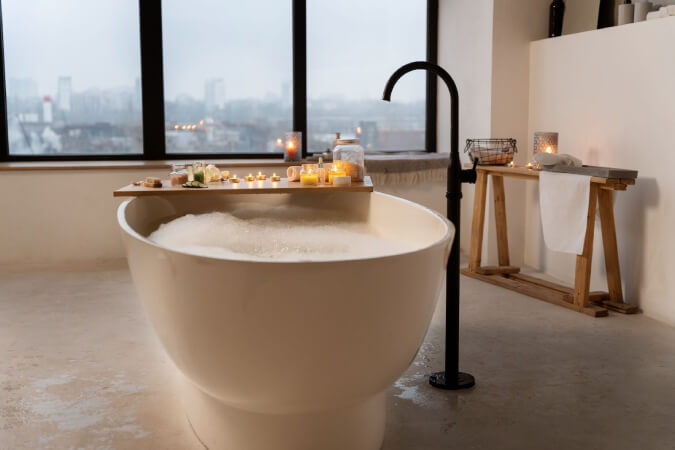
Ideal for spacious bathrooms, a freestanding bathtub is a symbol of luxury and elegance. Many people associate it with so-called bathing salons in luxury apartments and hotels. It can be placed anywhere, providing significant arrangement possibilities: it can even be placed in the middle of the room. Available in various shapes (oval, rectangular, round) and can be made from various materials (acrylic, cast iron, stone). Seekers of the highest comfort can also opt for a freestanding bathtub with hydromassage.
Freestanding Bathtub — which one to choose? If you have a large bathroom and are looking for a luxurious bathtub, pay attention to models:
- Mexen Volta,
- Mexen Roxy,
- Mexen Ovideo,
- Mexen Montana.
| ✅Advantages | ⛔Disadvantages |
| Aesthetics – a symbol of luxury and elegance. | Installation – requires special hydraulic installation. |
| Flexibility of placement – it can be placed anywhere in the bathroom. | Space requirement – performs best in spacious bathrooms. |
| Diversity of styles and materials – available in many variations. |
Corner Bathtubs
This is one type of bathtub that performs well in small bathrooms: a corner bathtub maximizes space while offering comfortable baths. It's also a good choice for those seeking original design solutions. Solid wall-mounted bathtubs look luxurious and fit well with modern bathroom designs. Models like the Westa can be a good alternative to freestanding bathtubs — a corner bathtub offers high comfort and allows for true relaxation during bathing.
| ✅Advantages | ⛔Disadvantages |
| Space-saving – ideal for small bathrooms. | No drawbacks |
| Originality – unique appearance and use of space. | |
| Functionality – often comes equipped with additional shelves. |
Rectangular Bathtubs
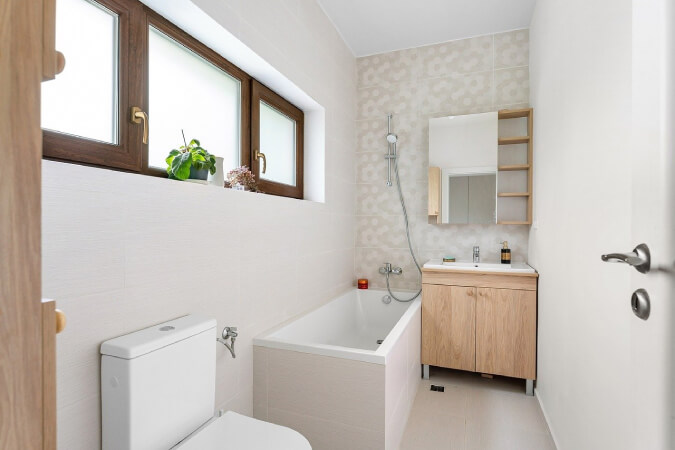
Rectangular bathtubs are the most classic and commonly found type of bathtub that features simple lines and a traditional shape. They are a versatile option that fits most bathroom designs, from modern to more traditional. Rectangular bathtubs are also easy to fit into the size of the bathroom — they are most often mounted against a wall, allowing integration even in smaller spaces.
If you are thinking of purchasing a rectangular bathtub for your bathroom, we recommend the following models:
- Mexen Cube Rectangular Bathtub;
- Mexen Cubik Rectangular Bathtub;
- Mexen Vega Rectangular Bathtub.
| ✅Advantages | ⛔Disadvantages |
| Universality – fits most bathrooms regardless of style. | No drawbacks |
| Optimal space usage – ideal for bathrooms of various sizes, including medium and small. | |
| Choice of sizes – available in a wide range of sizes, facilitating fit for user needs. | |
| Ease of installation – simpler and often cheaper to install than other types of bathtubs. |
Oval Bathtubs
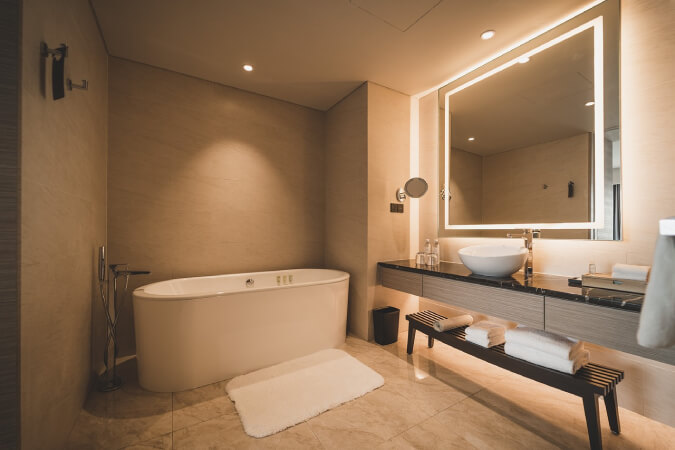
Are you wondering which bathtub will make you feel luxurious? Oval bathtubs, with their flowing lines and delicate shapes, add elegance and lightness to the bathroom. They are an excellent choice for those seeking unconventional solutions and wanting to create a spa atmosphere in their bathroom. We especially recommend freestanding oval models that perfectly fit the climate of prestigious bathrooms:
- Freestanding Mexen Oviedo Bathtub;
- Freestanding Mexen Montana Bathtub;
- Freestanding Mexen Eris Bathtub.
| ✅Advantages | ⛔Disadvantages |
| Aesthetics – modern and elegant appearance. | Space requirement – best displayed in spacious bathrooms. |
| Comfort of use – deep and spacious, ideal for relaxing baths. | Installation – may require special installation and spatial planning. |
| Flexibility of placement – can be installed both against the wall and as a freestanding element. | |
| Diversity of sizes and materials – available in many variations, allowing for fit to various needs and styles. |
Round Bathtubs

Round bathtubs are the essence of stylish selection, perfect for those seeking unique, designer solutions. Their unusual shape is not only a decorative element but also a practical solution providing exceptional comfort. They perform well in larger bathrooms and may require special spatial planning.
| ✅Advantages | ⛔Disadvantages |
| Unique design – a unique decorative element of the bathroom. | Space requirement – best displayed in large, spacious bathrooms. In the case of a small bathroom, their installation may prove troublesome. |
| Spaciousness – ideal for long, relaxing baths. | Installation – may be more complex, especially for freestanding models. |
| Comfort and relaxation – deep, allowing comfortable full body immersion | Limited choice of models on the market and the associated higher prices of round models. |
| Focal point – perfect for a central spot in the bathroom. |
Both oval and round bathtubs are ideal solutions for lovers of exquisite style who want to give their bathrooms a unique character and create a space conducive to relaxation. Their sleek lines and design make the bathroom not only a place for daily hygiene but a true zone for rest and relaxation.
Hydromassage Bathtubs
Hydromassage bathtubs with water massage functionality are a luxurious solution that combines relaxing and therapeutic functions with the daily ritual of bathing. Equipped with a system of water and air jets, they offer a massage that can help relieve muscle tension, improve circulation, and reduce stress.
| ✅Advantages | ⛔Disadvantages |
| Relaxation and stress relief – water and air massage provides deep relaxation and helps reduce stress levels. | Price – hydromassage bathtubs are generally more expensive both to purchase and install than traditional bathtubs. |
| Health benefits – massage can contribute to improved circulation, alleviate muscle and joint pain, and support rehabilitation. | Energy and water consumption – hydromassage bathtubs require more water and energy than standard bathtubs, which can lead to higher bills. |
| Customization of hydromassage functions to needs – many bathtub models allow for adjustment of jet strength and direction, enabling tailor-made massages. | Maintenance – hydromassage systems require regular maintenance and cleaning to prevent the buildup of residue and bacterial growth. |
| Aesthetic value – hydromassage bathtubs feature modern design that can enhance the aesthetic value of a bathroom. | Installation requirements – may require special water and electrical connections, which can increase installation costs and limit the bathtub's placement options. |
Bathtub Capacities
When arranging a bathroom, we must decide not only on the shape of the bathtub but also on its capacity. And there's no hiding that the capacity of the bathtub is crucial for comfort of use and also affects water consumption. Here is an overview of the different capacities that bathtubs can have, depending on their type and purpose. It’s worth becoming familiar with this information when planning to purchase a bathtub for your bathroom.
Small Bathtubs (up to 150 liters)
- Application — ideal for small bathrooms. Excellent for families with young children.
- Type — often in the form of rectangular, corner, or compact freestanding models.
- Advantages — small sizes allow for installation even in very small bathrooms. An additional advantage is water conservation.
Standard Bathtubs (150-200 liters)
- Application — the most frequently chosen solution for home bathrooms.
- Types — available in most shapes, including rectangular, oval, and corner.
- Advantages — a compromise between comfort and water consumption.
Large Bathtubs (200-250 liters)
- Application — for those who value spaciousness and comfort during bathing.
- Types — usually freestanding models, oval or round, offering more space for relaxation.
- Advantages — larger bathing space, ideal for long and relaxing baths.
Very Large Bathtubs (over 250 liters)
- Application — a luxurious solution for spacious bathrooms, often with hydromassage functionality.
- Types — large freestanding, round, or custom designs.
- Advantages — maximum comfort and relaxation, with the possibility of using hydromassage. They serve as an impressive decorative element in the bathroom.
Impact of Bathtub Capacity on Usage
- Water consumption — larger capacity means higher water usage and greater heating costs. When choosing a bathtub, it's worth considering not only aesthetic and comfort aspects but also ecological and economic ones.
- Fit to needs — the size and capacity of the bathtub should match the dimensions of the bathroom and user preferences. Bathtubs with larger capacities are ideal for relaxation but may not be necessary in case of daily baths due to higher water consumption.
Materials Used to Make Bathtubs
The choice of material from which the bathtub is made is crucial for its durability, appearance, and comfort of use.
Acrylic Bathtubs
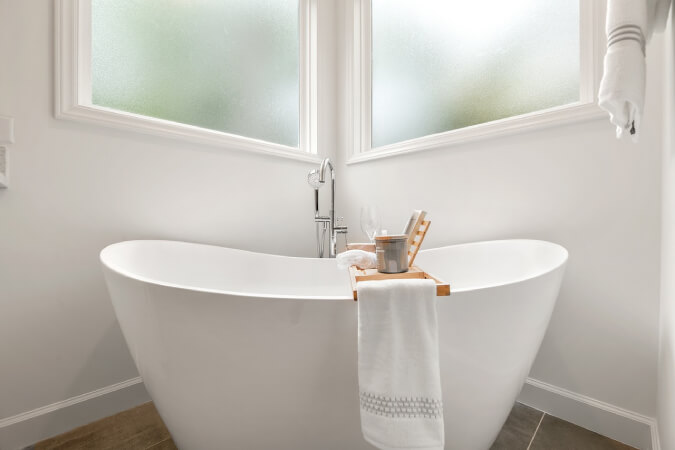
Acrylic is a lightweight material that feels warm to the touch and has a smooth surface. It is one of the most popular materials used for bathtubs due to its ease of processing.
Acrylic, or polymethyl methacrylate (PMMA), is a synthetic thermoplastic polymer that serves as a lighter and more impact-resistant alternative to glass. Its popularity in bathtub production stems from numerous properties that make it exceptionally attractive to both manufacturers and consumers.
| ✅Advantages | ⛔Disadvantages |
| Lightweight – easy to transport and install. | Prone to scratches – although scratches are easier to repair than in other materials. |
| Warm to the touch – an acrylic bathtub enhances comfort of use. | |
| Easy to maintain – easy to clean and resistant to most stains. | |
| Availability in various shapes and sizes – thanks to ease of molding. |
Cast Iron Bathtubs

Cast iron, used in bathtub production, is a material known for its exceptional durability and classic appearance. It is an alloy of iron with carbon (and possibly other additives) that is characterized by its strength and ability to retain aesthetics and functionality over time. In the context of bathtubs, cast iron is most commonly coated with a layer of enamel, which increases its corrosion resistance, scratch durability, and eases cleaning.
| ✅Advantages | ⛔Disadvantages |
| Durability – practically indestructible; can last for decades. | Weight – they are very heavy, which can complicate installation. |
| Heat retention – excellent thermal insulation maintains water temperature longer. | Limited shapes and sizes – cast iron bathtub production is more complex, which reduces their availability in terms of type. |
| Scratch and wear resistance – the hard enamelled surface is difficult to scratch. | Risk of enamel damage – strong impacts can cause chipping or cracking of the enamel. |
| Ease of maintenance – enamel is easy to clean and resistant to most chemical agents. |
Steel Bathtubs

Enamelled steel is created by coating steel sheets with a layer of enamel. This process combines the durability and strength of steel with the aesthetic and hygienic finish that enamel offers. A steel bathtub is resistant to corrosion, easy to clean, and also visually appealing, making it a popular choice among consumers.
| ✅Advantages | ⛔Disadvantages |
| Durability and sturdiness – steel covered with enamel is very durable and resistant to mechanical damage. | Cold to the touch – steel quickly adopts the ambient temperature, which can lead to faster cooling of the water. |
| Corrosion resistance – the enamel surface protects the steel from rust, extending the bathtub's lifespan. | Design limitations – although various colors are available, the shapes may be less varied than with acrylic bathtubs. |
| Ease of cleaning – smooth enamel surface is easy to maintain and resistant to most chemical agents. | Risk of enamel damage – strong impacts can cause chipping or cracking of the enamel. |
| Hygiene – the enamel surface does not allow for bacteria and mold growth, which is important for maintaining cleanliness. | |
| Good price – compared to materials like cast iron or some types of stone, steel bathtubs are often more budget-friendly. |
Composite Bathtubs
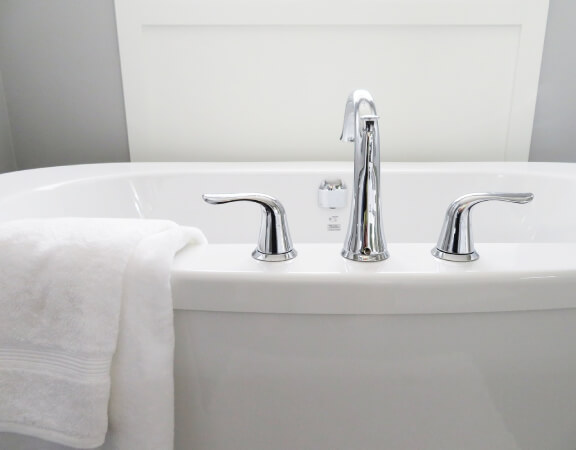
Composite or mineral composite bathtubs are a choice for those looking for a fusion of modern design with exceptional durability and comfort of use. Composite is a material made from a blend of natural minerals (usually marble or quartz) with polyester or acrylic resin, creating a uniform and smooth surface.
This specific blend of materials gives composite unique properties, making it an attractive choice for producing bathtubs, countertops, flooring, and other interior elements.
| ✅Advantages | ⛔Disadvantages |
| High aesthetics – the finish imitating natural stone gives a luxurious character to the bathroom. | Weight – composite is a heavier material, which can complicate transport and installation. |
| Durability – scratch and impact resistance makes these bathtubs very durable. | Repair limitations – damages may be harder to repair compared to other materials. |
| Good thermal insulation properties – water retains temperature longer due to the insulating capabilities of composite. | Limited availability of designs – although offering a wealth of finishes, shapes and sizes may be more limited compared to acrylic bathtubs. |
| Easy to maintain – smooth surface facilitates cleaning and prevents bacteria growth. | Cold to the touch – like natural stone, composite can initially feel cold to the touch, though it maintains water warmth well. |
| Eco-friendliness – materials used in production are often eco-friendly and environmentally friendly. |
REMEMBER In the case of bathtubs made of acrylic and those coated with enamel (enamel-coated steel, enamel-coated cast iron), it is not recommended to use strong detergents for cleaning.
Cleaning agents containing aggressive chemicals can damage the smooth, glossy surface of these materials, causing dullness, scratches, or even permanent stains. Instead, for maintaining cleanliness and gloss, it is best to use mild liquids or specially designated preparations that clean effectively without damaging the delicate surface.
Regular, gentle cleaning will ensure lasting aesthetics and functionality of bathtubs made from these materials.

Bathtub Surround
Bathtub surrounds serve several important functions in the bathroom. They not only conceal plumbing installations and the bathtub's supporting structure but can significantly influence the aesthetics of the entire room.
The bathtub surround can be made from various materials and tailored to individual needs and aesthetic preferences of the user.
Materials Used to Make Bathtub Surrounds
- Ceramic tiles — commonly used due to their resistance to moisture and ease of maintenance. Tiles offer a wide range of designs and colors, allowing easy coordination with the bathroom style.
- Acrylic panels — lightweight, easy to install, and available in various colors. Acrylic panels can also be transparent or semi-transparent, adding a modern look.
- Wood — gives the bathroom warmth and a natural character. Wood used as a bathtub surround must be appropriately protected against moisture to prevent deformation and damage.
- Stone — marble, granite, or decorative stone are materials that add luxury to the bathroom. They are durable and resistant but require regular maintenance.
Installation of Surround
- Fixed surround — built permanently, often using the same ceramic tiles laid throughout the bathroom. This is a durable and aesthetically cohesive solution but complicates access for repairs if necessary.
- Modular surround — consists of ready-made panels that are easy to install and can be dismantled if necessary. This facilitates access to plumbing installations while offering an attractive appearance.
TIP!
When selecting a surround for a bathtub, consider not only the aesthetic aspect but also the practical one — ease of cleaning, access to installations, and durability of the material. The surround should harmonize with the overall design of the bathroom, creating a coherent and functional decor. It is also important to ensure proper protection of moisture-sensitive materials to ensure long-lasting use without frequent renovations.
Bathtub Trap
Bathtub traps are a key element in the equipment of every bathtub, responsible for effective water drainage and preventing unpleasant odors from sewage from returning to the bathroom. The choice of the right trap is crucial for both the functionality and ease of use of the bathtub.
Types of Bathtub Traps
- Automatic drain trap — equipped with a mechanism that allows for opening and closing the drain.
- Click-clack drain trap — a popular and easy-to-use type of trap, where the drain is opened and closed by pressing the stopper. Due to its simplicity and aesthetics, this type of trap enjoys great popularity.
- Trap with a chain — a traditional solution where the plug for sealing the drain is connected by a chain to the bathtub. This is a solution often seen in older installations or vintage tubs reminiscent of the past.
Materials Used to Make Bathtub Traps
Bathtub traps are usually made from chrome-plated metal or plastic. Metal traps offer greater durability and resistance to mechanical damage, while those made of plastic are lighter and can be more economical.
What Features Should Good Bathtub Traps Have?
- Corrosion resistance — the trap must be resistant to corrosion, which ensures its longevity and proper operation for many years.
- Ease of installation and cleaning — traps should be designed in such a way that their installation and disassembly for cleaning are simple and intuitive.
- Well-designed drain — to avoid clogs and ensure smooth water drainage, it is essential that the trap has an appropriately designed flow.
Bathtub Trap - What Size to Choose?
The size of the bathtub trap is a critical element to consider when choosing a component to ensure optimal water flow and proper fit to the plumbing installation and the bathtub itself. The size of the trap relates to a few important dimensions:
Drain diameter
This is one of the most important dimensions, which must comply with the bathtub's drain standard. Typical drain diameters for bathtubs are 40 mm or 50 mm, though other sizes may also occur, depending on the specifics of the installation and the bathtub model.
Height of the trap
The height of the trap is particularly important when the space under the bathtub is limited. It's crucial to ensure that the chosen trap model fits in the available space, allowing for proper installation and easy cleaning.
Some traps are specially designed for low-profile bathtubs, offering a smaller height, making them ideal for installation in under-space constraints.
Length and shape of the drain pipe
The length and shape of the trap's drain pipe must be adapted to the layout of the plumbing installation in the bathroom. Depending on needs, traps with straight or flexible pipes are available, which can be adjusted to different configurations.
Flexible pipes are particularly useful when connecting the bathtub drain to the sewage system requires unusual bends or is distant.
Compatibility with the bathtub
Regardless of dimensions, the trap must be compatible with the specific bathtub model, which includes not only size but also the method of installation and aesthetics. At Mexen, you will find traps tailored to the model of the bathtub.
Bathtub Accessories
Bathtub accessories are additions that can significantly enhance the comfort of bathing, safety, and the functionality of the bathroom.
Handles and Grab Bars for Bathtubs
Metal or plastic wall-mounted grab bars installed at the edges of the bathtub provide additional support when entering and exiting, increasing the safety of use, especially for older individuals or those with limited mobility.
Bath Pillows for Bathtubs
Waterproof bath pillows that can be applied or attached to the back wall of the bathtub provide support for the head and neck during bathing, thus increasing relaxation comfort.
Anti-slip Mats and Inserts for Bathtubs
Rubber or silicone mats placed at the bottom of the bathtub prevent slipping when entering or exiting, which is particularly important for children and older individuals.
Shelves and Stands for Bath Accessories
Metal, plastic, or wooden shelves and stands that can be mounted on the edge of the bathtub or on the wall are used for storing cosmetics, soaps, shampoos, or other accessories needed during bathing.
Bathtub Screen
Bathtub screens are a practical solution that combines the functionality of a bathtub with the possibility of a quick shower while protecting the rest of the bathroom from water splashes.
Available in various styles and sizes, they can be adapted to almost any type and size of bathtub, from standard to unconventional shapes.
Types of Bathtub Screens
- Single-panel screens — the simplest and most popular form of screen, consisting of one fixed or movable panel. Ideal for smaller bathrooms.
- Multi-panel screens — composed of two or more segments, which can be folded or slid, offering greater flexibility and better adaptation to user needs.
- Sliding screens — equipped with a sliding mechanism allowing for easy opening and closing, particularly useful in narrow spaces.
Materials Used to Make Bathtub Screens
- Tempered glass — the most commonly used material due to its durability and ease of cleaning. Tempered glass is safe to use as it shatters into small, non-sharp pieces when broken.
- Acrylic glass — a lighter alternative to tempered glass, although less scratch-resistant. A good choice from an economic perspective.
Finishing of Bathtub Screens
- Transparent — provides a minimalist appearance, without visually reducing the bathroom space.
- Frosted or patterned — provides greater privacy and adds a unique character to the bathroom. Patterns can also help hide water deposits.
Additional Features of Bathtub Screens
- Antibacterial coating — some bathtub screens are coated with a special layer that prevents the accumulation of bacteria and facilitates cleaning
- Easy-clean coating — a special coating that allows water to flow off the screen easily, minimizing the deposition of limescale and soap residues.
NOTE! Bathtub screens are not only practical but also serve as a decorative element in the bathroom, allowing for the creation of a personalized and functional bathing space. Their installation may require precision and skill, therefore in some cases, it is recommended to use the services of professionals.

